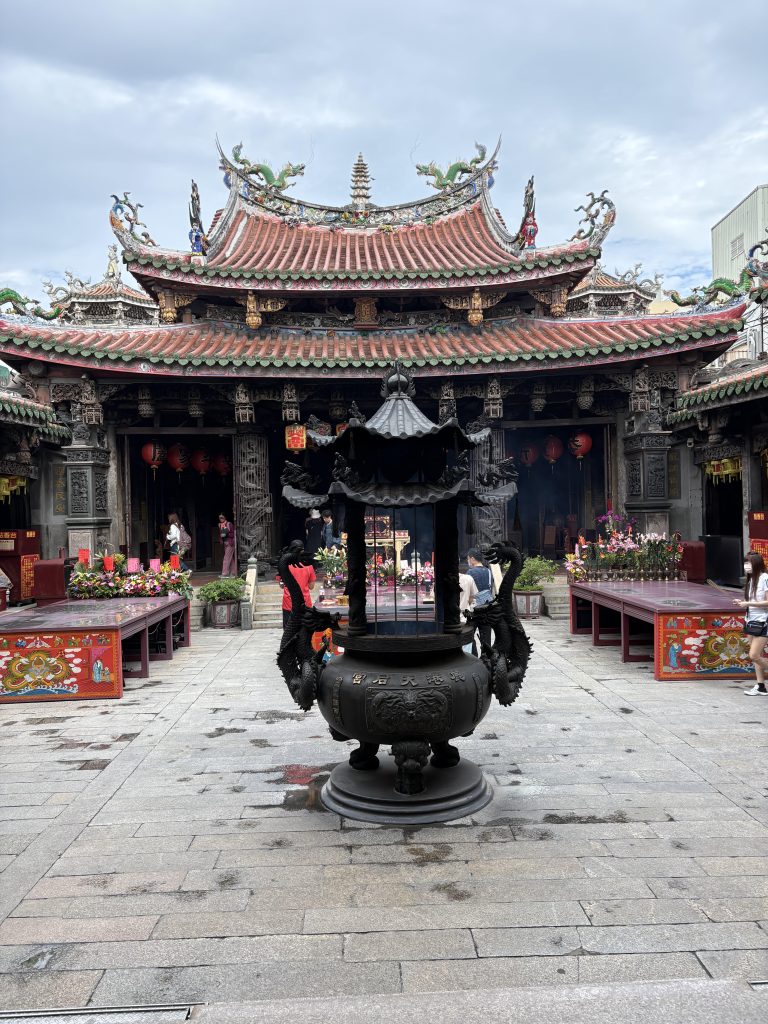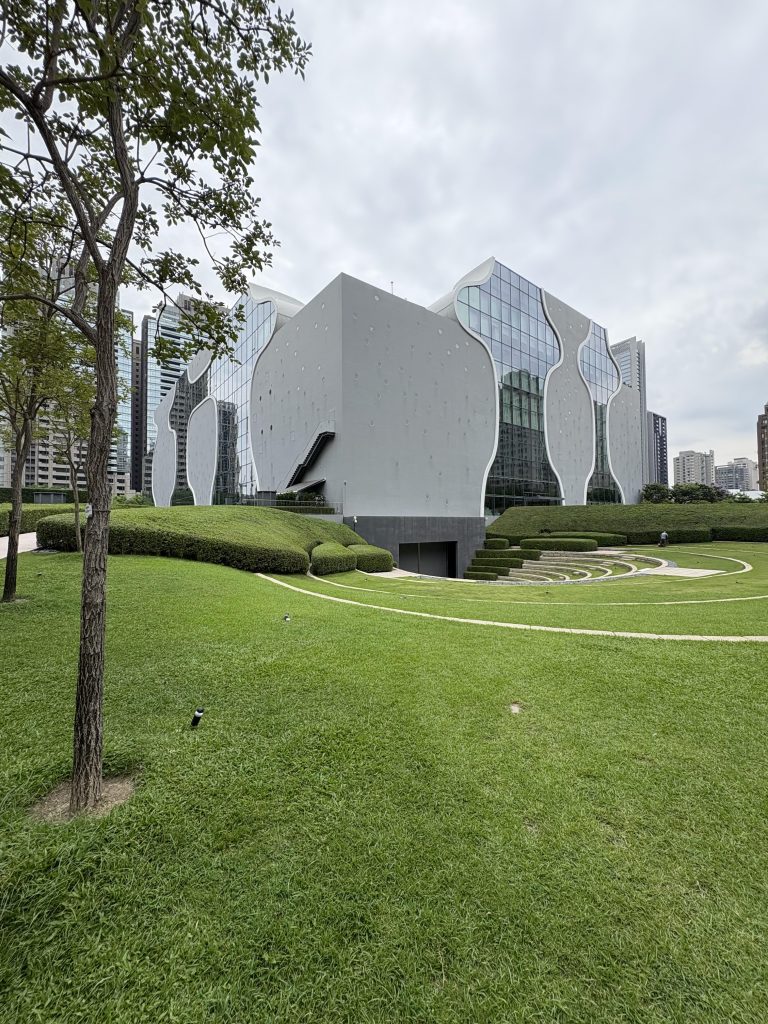Today we started our day with a tour of the National Taichung Theater. I was amazed by the architecture of both the inside and outside of the building. On our way in, we saw a bus arrive and employees immediately went to greet them as they got off the bus. Additionally, the fountains outside the opera house turned on. Just based on these small observations of how they were treated, we could tell their importance and that they are highly respected figures in Taiwan.
Following the tour of the opera house, we visited Lukang Historical Town. What I found most interesting about this town was the mix of tourist attractions and shops that appear primarily for locals. I was surprised by the integration of shops because they have two drastically different customer bases, yet are confined in the same area. Usually, tourist attractions/shops are placed in the same area because tourists tend to prefer similar activities and accommodations, usually seeking leisure, extravagant spending, and souvenirs. Locals, however, have different goals, preferring practicality, efficiency, and productivity to increase the ease of their daily lives. Thus, I was shocked to see tourist shops placed directly next to traditional shops in Lukang Historic Town. This shows that the town had been able to adapt to accommodate both locals and tourists overtime.
After we walked through Lukang, we made our way to the Sea Goddess Temple. I thought this temple was one of the most beautiful we’ve seen so far, and I really enjoyed the view from the second story. When I was in this temple, I found myself feeling conflicting emotions regarding respect for the religion and temple itself. Because I was raised in a Christian household, Buddhists and Daoist values/beliefs are very different from what I was raised to believe. Therefore, I chose not to participate in any of the rituals that some of the other students did because I personally don’t believe in them. This experience made me curious how locals viewed us coming into their place of worship. From my perspective, I felt as though we were infiltrating a sacred place. However, Professor Young pointed out that by coming to the temple, we are spreading awareness of their religion and showing appreciation for it, which is perceived as positive by Buddhists. Yet, I still choose not to take any of the offerings (rice, paintbrush, etc.), and chose not to donate money because I didn’t want to de-value the importance of the tradition by participating in something I didn’t believe in.
Although visiting temples isn’t a religiously enlightening experience for me, I still have immense appreciation for the architecture, history, and origin of them, and am excited to learn more about how they have shaped culture and business in Taiwan.

